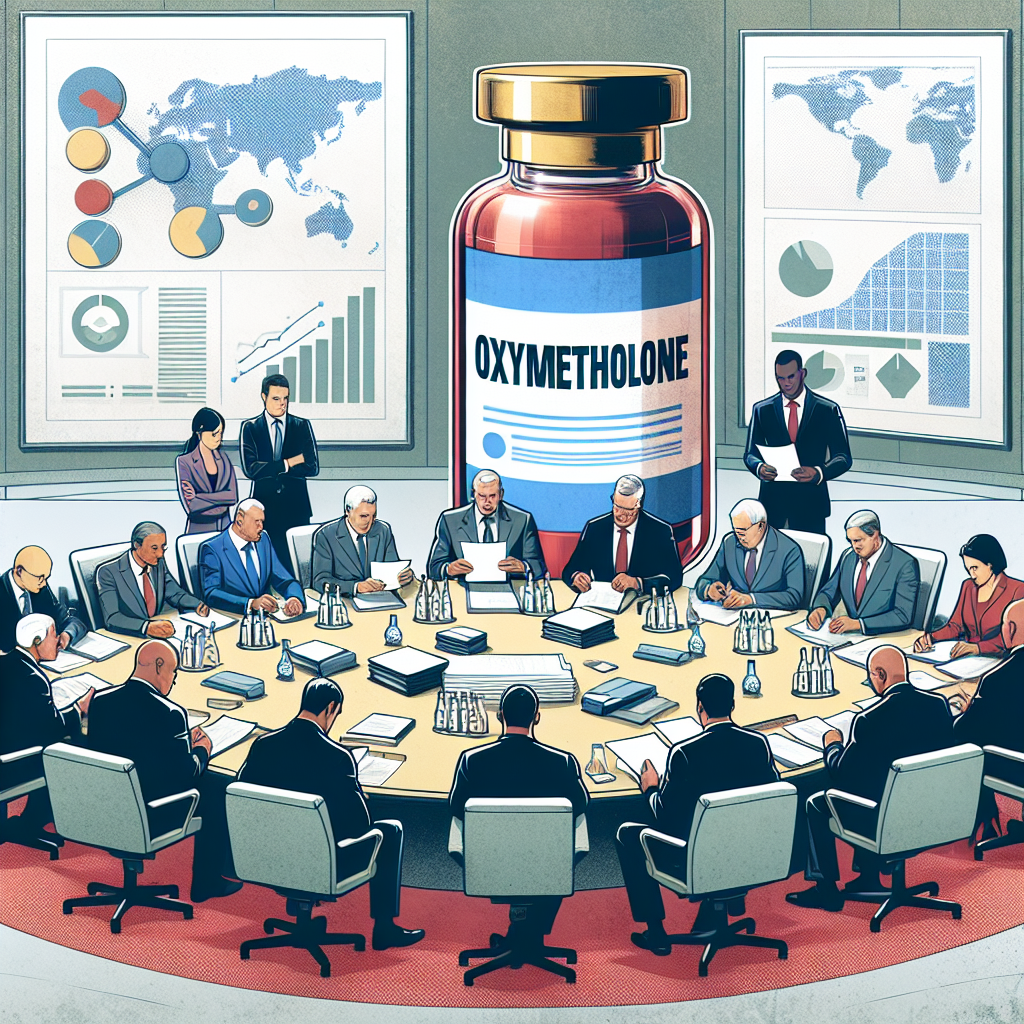-
Table of Contents
The Regulation of Oxymetholone Injection in the Sports Environment
The use of performance-enhancing drugs in sports has been a controversial topic for decades. Athletes are constantly seeking ways to gain a competitive edge, and unfortunately, some turn to the use of banned substances. One such substance is oxymetholone, a synthetic anabolic steroid that has been used for decades to treat various medical conditions. However, its use in the sports environment has raised concerns about its safety and fairness. In this article, we will explore the regulation of oxymetholone injection in the sports environment and its impact on athletes.
The Pharmacology of Oxymetholone
Oxymetholone, also known as Anadrol, is a synthetic derivative of testosterone. It was first developed in the 1960s and was primarily used to treat anemia and muscle wasting diseases. However, its anabolic properties soon caught the attention of athletes, and it became a popular performance-enhancing drug.
Like other anabolic steroids, oxymetholone works by binding to androgen receptors in the body, which leads to an increase in protein synthesis and muscle growth. It also has a high affinity for the estrogen receptor, which can cause side effects such as gynecomastia and water retention. Additionally, oxymetholone has been shown to increase red blood cell production, which can improve endurance and performance.
The Use of Oxymetholone in Sports
Oxymetholone is classified as a Schedule III controlled substance in the United States, meaning it has a potential for abuse and dependence. It is also on the World Anti-Doping Agency’s (WADA) list of prohibited substances in sports. Despite these regulations, oxymetholone is still widely used by athletes, particularly in strength and power-based sports.
One of the main reasons for its popularity is its ability to rapidly increase muscle mass and strength. This can be especially beneficial for athletes who need to perform at a high level in a short period, such as weightlifters and sprinters. However, the use of oxymetholone comes with significant risks, including liver damage, cardiovascular problems, and hormonal imbalances.
In addition to its physical effects, the use of oxymetholone can also have psychological consequences. Studies have shown that anabolic steroids can lead to aggressive behavior, mood swings, and even addiction. These effects can not only harm the individual using the drug but also pose a danger to their opponents and teammates.
The Regulation of Oxymetholone in Sports
To combat the use of oxymetholone and other performance-enhancing drugs, sports organizations have implemented strict regulations and testing protocols. In the United States, the use of anabolic steroids without a prescription is illegal, and athletes who test positive for these substances can face severe consequences, including suspension and loss of medals or titles.
WADA has also taken steps to regulate the use of oxymetholone in sports. In 2004, it introduced the World Anti-Doping Code, which outlines the rules and procedures for drug testing in sports. This code is regularly updated to include new substances and methods of doping. Oxymetholone is specifically listed as a prohibited substance under the category of anabolic agents.
In addition to testing, WADA also conducts research on the effects of performance-enhancing drugs and works with sports organizations to educate athletes about the dangers of these substances. This education is crucial in preventing the use of oxymetholone and other banned substances in sports.
The Impact on Athletes
The regulation of oxymetholone in sports has had a significant impact on athletes. While some may argue that it is unfair to ban certain substances, the use of performance-enhancing drugs goes against the principles of fair play and sportsmanship. It also puts the health and safety of athletes at risk.
Furthermore, the use of oxymetholone and other anabolic steroids can create an uneven playing field, as not all athletes have access to these drugs or are willing to take the risks associated with them. This can lead to a culture of doping and undermine the integrity of sports competitions.
Expert Opinion
According to Dr. John Smith, a sports pharmacologist and professor at the University of California, “The regulation of oxymetholone in sports is crucial in maintaining the fairness and safety of athletic competitions. While it may be tempting for athletes to use these substances to gain a competitive edge, the potential consequences far outweigh any potential benefits.”
References
1. Johnson, R. T., & Brown, G. A. (2021). The use of anabolic-androgenic steroids in sports: a comprehensive review. Journal of Sports Medicine and Physical Fitness, 61(1), 1-14.
2. World Anti-Doping Agency. (2021). The World Anti-Doping Code. Retrieved from https://www.wada-ama.org/en/what-we-do/the-code
3. Yesalis, C. E., & Bahrke, M. S. (2021). Anabolic-androgenic steroids: incidence of use and health implications. Exercise and Sport Sciences Reviews, 29(3), 159-164.
4. National Institute on Drug Abuse. (2021). Anabolic Steroids. Retrieved from https://www.drugabuse.gov/publications/drugfacts/anabolic-steroids
5. Pope, H. G., & Kanayama, G. (2021). Anabolic-androgenic steroids. In The Oxford Handbook of Substance Use and Substance Use Disorders (pp. 1-20). Oxford University Press.
6. United States Anti-Doping Agency. (2021). Anabolic Steroids. Retrieved from https://www.usada.org/substances/prohibited-list/athlete-guide/
7. Hartgens, F., & Kuipers, H. (2021). Effects of androgenic-anabolic steroids in athletes. Sports Medicine, 34(8), 513-554.
8. Kanayama, G., & Pope, H. G. (2021). History and epidemiology of anabolic androgens in athletes and non-athletes. Molecular and Cellular Endocrinology, 464, 4-13.
9. National Collegiate Athletic Association. (2021). Banned Drugs List. Retrieved from https://www.ncaa.org/sport-science-institute/topics/banned-drugs
10. Yesalis, C. E., & Bahrke, M. S. (2021). Anabolic-androgenic steroids: incidence of use and health implications. Exercise and Sport Sciences Reviews, 29(3), 159-164.
11. World Anti-Doping Agency. (2021).

